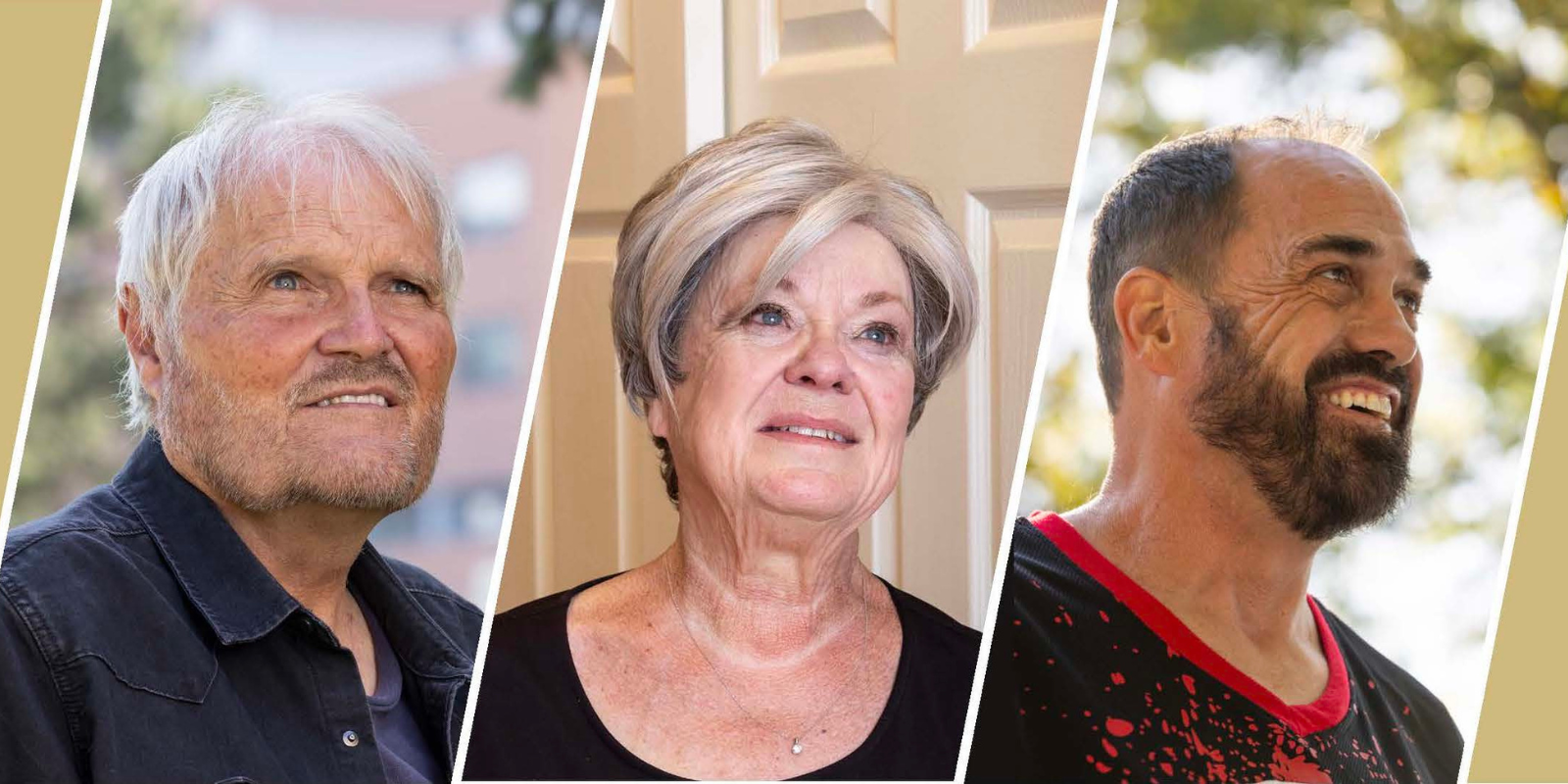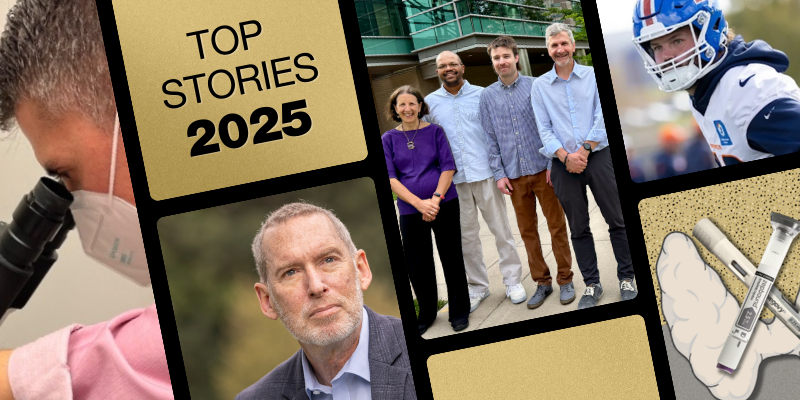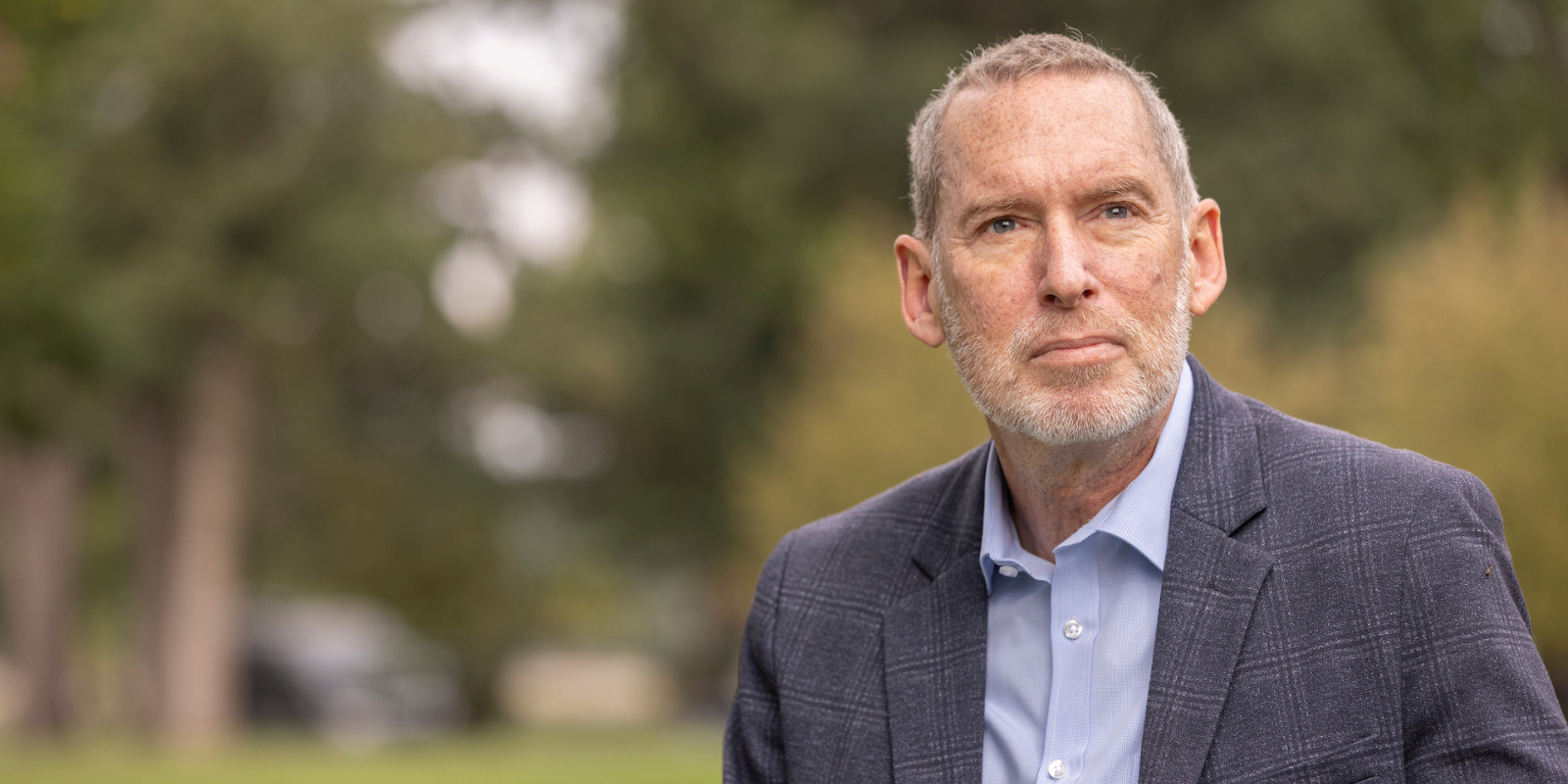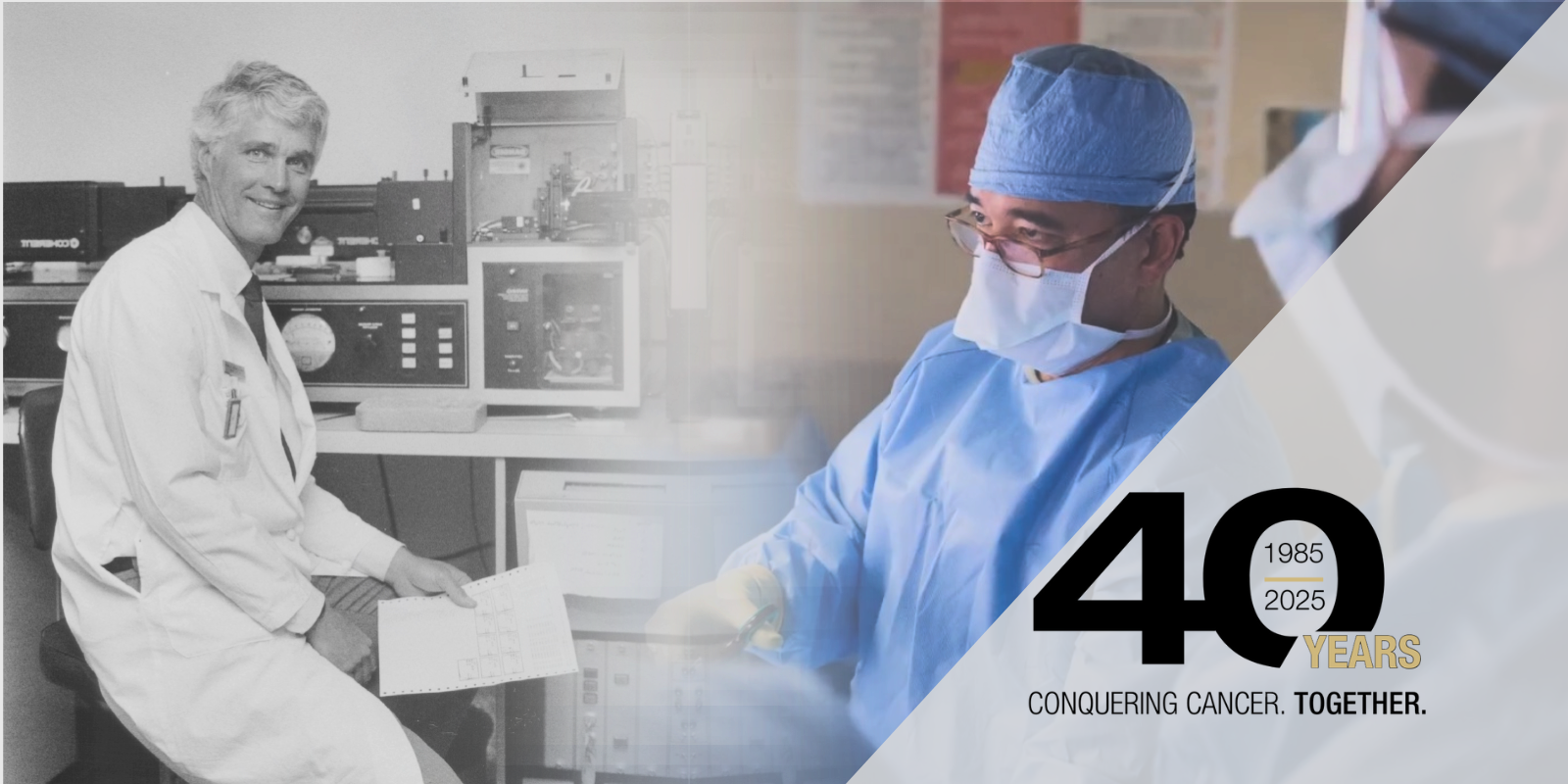A key yardstick used to evaluate success in cancer treatment shows that for many cancers, a higher percentage of people diagnosed at the University of Colorado Cancer Center have survived five years or more beyond their diagnoses than for the nation as a whole.
The difference in five-year cancer survival rates is particularly pronounced for cancers of the esophagus, liver, pancreas, lungs, and stomach, which also are among the most challenging to successfully treat, according to data provided by UCHealth, the CU Cancer Center’s clinical partner.
“Seeing that our survival rates are higher is certainly a point of pride for the CU Cancer Center,” says Wells Messersmith, MD, the cancer center’s associate director of clinical services and division head of medical oncology in the CU School of Medicine. “There are a lot of factors that lead to improved cancer survival rates for patients, one of which is coming to the CU Cancer Center.”
Five-year cancer survival means that a person who was diagnosed with a cancer is still alive five years later. It includes people who show no signs of cancer after concluding treatment. It also includes people who still have signs of cancer after five years but whose cancer is being managed through treatment.
CU Cancer Center member D. Ross Camidge, MD, PhD, sees the CU Cancer Center’s many clinical trials as greatly contributing to its patients’ higher survival rates.
“We’re trying to get access to tomorrow’s treatments today,” says Camidge, the Joyce Zeff Endowed Chair in Lung Cancer Research. “We’ve got 40% of our lung cancer patients on clinical trials, which is double the next best lung cancer program in the country and more than 10 times the national average. And that’s not just because we throw trials at people. We try very hard to select the trials that are going to address unmet needs.”
Below, meet three CU Cancer Center patients who are thriving more than five years after their treatment.
Glen Miller: The 'Hockey Puck' That Kept Colorectal Cancer at Bay

Glen Miller calls it his “hockey puck,” and he knows it helped to save his life after he was diagnosed with colorectal cancer that spread to his liver.
Officially known as a hepatic arterial infusion pump (HAI), the device is surgically implanted under the skin to deliver a high dose of chemotherapy into the liver’s blood supply.
“The goal of the pump therapy is twofold,” says Reed Weiss, DNP, APRN, one of Miller’s providers at the CU Cancer Center. “One of the goals is trying to shrink the tumors down and keep the disease under control, especially when it’s widespread. We know there’s a lot of micro-metastatic disease that we can’t see on the scans.
“The other goal of the treatment is conversion to being a surgical candidate,” Weiss continues. “If the patient doesn’t appear to be resectable up front, we can treat them with the pump and eventually get them to surgery so we can get rid of all the disease in the liver.”
In Miller’s case, the pump was placed to keep the disease under control, implanted after multiple rounds of systemic chemotherapy and three separate surgeries to remove the cancer in his liver. He received the HAI therapy along with additional systemic chemotherapy.
Miller’s cancer journey began seven years ago, when he began feeling pain in his abdomen. He suspected issues with his gallbladder, but when he went to get checked out, doctors diagnosed him with colorectal cancer that had spread to the liver. Miller, who lived in Victoria, Canada, at the time, was told he had around a year to live.
“They said, ‘You have stage 4 cancer; we'll put you on palliative chemo and give you about a year to live—maybe a year and a half if you’re really tough,’” Miller says. “I wanted a second opinion, so I went to Denver because my niece’s husband had cancer, and he was getting treated at Anschutz.”
Miller met with CU Cancer Center members Ana Gleisner, MD, PhD, and Chris Lieu, MD—associate director of clinical research at the CU Cancer Center and the Sohrab Amini, MD, FACS, Endowed Chair in Pancreatic Cancer Research—who had a different outlook of his prognosis than the doctors in Canada.
“They said, ‘We can operate on you, but you need to go on major chemotherapy before we do, because we want to knock this cancer back,’” Miller remembers. He eventually moved back to his hometown of Sanford, in Colorado’s San Luis Valley, to be closer to the treatment. Three months of chemotherapy was followed by surgery, then more chemotherapy and more surgeries as the cancer continued to recur. After the HAI pump treatment, however, Miller has shown no evidence of disease for nearly three years.
“If I didn’t get a second opinion, I most likely would not be here today,” Miller says. “As far as I’m concerned, the CU doctors have given me the six years that I’ve got, and they might have given me the rest of my life back, whatever that was ever going to be. Dr. Lieu and Dr. Gleisner—they’re my heroes.”
Charlotte Butler: A Lifesaving Clinical Trial

According to her race medals, Charlotte Butler has walked all over the place. On trails in Spain, France, Ireland, and the Netherlands, not to mention the Rocky Mountains and other spots in the U.S.
In actuality, most of those walks were virtual — miles logged as she did laps around the reservoir near her home in Aurora, Colorado, and tracked on maps of trails around the world on the Conqueror Virtual Challenges website.
But virtual miles are no less meaningful to Butler, especially after an endometrial cancer diagnosis that at one point landed her in the hospital with a series of small strokes.
She has the added confidence of having taken part in a clinical trial at the CU Cancer Center, led by Bradley Corr, MD, to prevent recurrence in people with endometrial (or uterine) cancer.
Butler was diagnosed with stage 1 endometrial cancer in fall 2021, after noticing abnormal vaginal bleeding. Her doctors performed a hysterectomy to remove the cancer. That was followed by a sequence of six radiation treatments, a safety measure to kill any remaining microscopic cancer cells.
Everything seemed fine until the following March, when Butler’s husband, Rick, noticed that Charlotte wasn’t responding to him the way she normally did.
“He took her to the hospital, and they discovered she had had a stroke,” says Charlotte and Rick’s daughter, Gaye Lynn Rast. “And that’s when it all spiraled out of control.”
Doctors discovered that a small amount of cancer remaining in Butler’s bloodstream was causing disseminated intravascular coagulation (DIC), a rare blood disorder that causes abnormal clotting in the blood vessels. They began treating Butler with chemotherapy in an effort to stop the strokes.
“Once they found the cancer and gave her that first round of chemo in the ICU, she started getting better,” Rast says. “She was able to be at home for the rest of the treatments, which took over six months.”
Butler’s cancer was finally under control, and her doctors wanted to make sure it stayed that way. Her oncologist knew Corr was overseeing a multisite clinical trial at the CU Cancer Center to see if the oral drug rucaparib, part of a class of drugs known as PARP inhibitors, extends survival for uterine cancer patients who have completed the chemotherapy portion of their treatment.
The study, which has since closed, found that rucaparib extends progression-free survival for an average of 19 months longer than surveillance alone. The current standard of care is surveillance, so the trial showed an alternative option that is beneficial for patients.
Butler qualified for the trial and began taking two pills each morning and two each afternoon. The trial was double-blinded, meaning neither Butler nor Corr knew if she was taking a placebo or the actual medicine.
Butler was on the clinical trial for 16 months before it was terminated when the company that made rucaparib went out of business. At that time, Butler learned she was in the group that received rucaparib while she was on the study.
“She has an endometrial cancer with a high risk of recurrence, and she never recurred the entire time she was on therapy,” says Corr, the Katie Taylor Memorial Endowed Chair in Gynecologic Oncology. “We believe she’s one of the people who showed significant benefit from this therapy.”
Butler is now back under the care of her original oncologist, who conducts regular checkups to make sure the cancer isn’t coming back. The possibility of a recurrence is always there, but Butler tries her best to push those thoughts from her mind and focus on the sense of gratitude her cancer journey has brought her.
“It’s remembering the fact that if things had gone differently. I would not be here at this moment, doing these things, or seeing the wildlife and the sailboats out at the reservoir that I get to see,” she says. “My family—my husband, my kids, my grandkids—I am thankful every day for them and for all of the support they gave me. A number of different doctors commented on it and said, ‘Most people don’t have the kind of support system that you have. They literally saved your life.’
Jason Patton: Second Opinion Saves the Day

If you’re going to get surgery for your cancer on a Friday the 13th, and your name is already Jason, you might as well lean into the coincidence.
At least that’s what Jason Patton thought in 2019, when he went in for surgery with Marco Del Chiaro, MD, PhD, professor of surgery and division chief of surgical oncology in the University of Colorado Department of Surgery.
“I came to the hospital that day dressed as Jason Voorhees from ‘Friday the 13th,’” says Patton, 47, who lives in Sheridan, Colorado. “I said, ‘Something’s happened to me, and I came here to kill cancer.’ Dr. Del Chiaro got a good kick out of it. He said, ‘The way you came in with that attitude? Those are the type of people who make it.’”
For Patton, the surgery came toward the end of a months-long ordeal that started with digestion problems. “I noticed I wasn't digesting food,” he says. “I'd eat a salad, and salad would just come out.”
A gastroenterologist ordered a CT scan and diagnosed Patton with pancreatitis, but that didn’t sound right to him. He pushed for a second opinion, and that’s when a second gastroenterologist found that the mass around his pancreas had doubled in size since the first scan.
“They said, ‘We’re referring you to UCHealth University of Colorado Hospital,’ and two weeks later, I went to see Dr. Del Chiaro,” Patton says. “They did a biopsy on September 4, and after that, he said, ‘You have a Whipple procedure scheduled for Friday the 13th.’”
Patton was diagnosed with ampullary cancer, a rare and aggressive cancer that forms in the area where the bile duct and pancreatic duct meet. When untreated, the cancer often spreads to nearby organs including the pancreas and liver.
“An important part of Jason’s story is the misdiagnosis at the beginning,” says Del Chiaro, the Morton and Sandra Saffer Endowed Chair in Personalized Cancer Treatment and Oncology Leadership. “When I saw his scan, I saw that his pancreatic duct was dilated up to seven millimeters. It didn't look normal to me, and so I got the suspicion of a malignancy, so I asked him to do more investigation. He came here for chronic pancreatitis; we discovered a cancer.”
Patton spent six days in the hospital, then began six months of chemotherapy to ensure that any remaining cancer in his body was eradicated.
Del Chiaro says Patton’s positive attitude and willingness to push for a second opinion meant everything when it came to his care.
“If you act quickly to get a second opinion, sometimes that can save your life,” he says. “Now it's five years out, and he’s doing fine, having a normal life. If you treat cancer properly and in a timely fashion, there is hope.”



